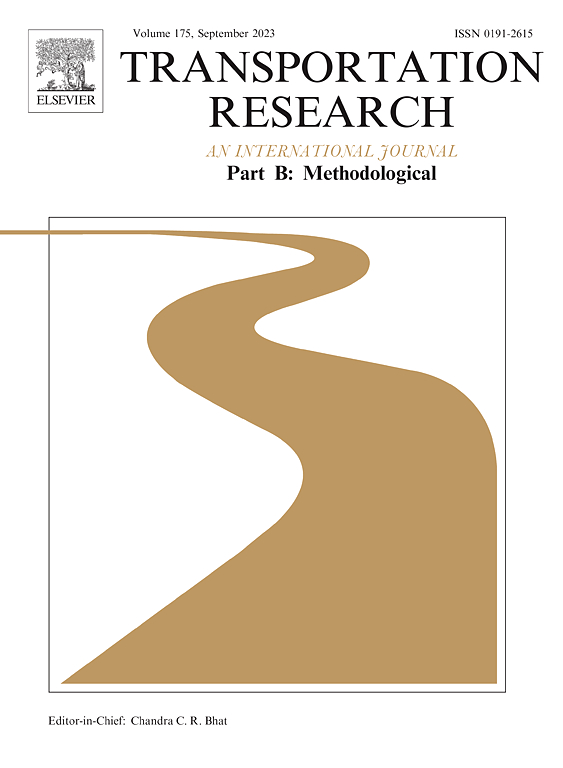Capacity drop at active bottlenecks: An empirical study based on trajectory data
IF 6.3
1区 工程技术
Q1 ECONOMICS
引用次数: 0
Abstract
Capacity drop, a traffic phenomenon indicating that the discharge flow from a queue is lower than the pre-queue flow, is commonly observed at freeway bottlenecks. In the literature, the majority of empirical studies on capacity drop rely on aggregated traffic flow data. To fully understand the mechanism behind capacity drop, it is essential to analyze trajectory data, which captures the microscopic behavior of individual vehicles. However, the availability of high-quality trajectory data covering both sufficient spatial and temporal scope is limited. Consequently, existing theories and mechanisms to explain capacity drop from the perspective of vehicle behavior are predominantly analytical, lacking direct evidence to validate their impacts on contributing to capacity drop. This paper fills this gap by conducting a comprehensive empirical analysis of capacity drop using high-resolution trajectory data extracted from videos recorded by unmanned aerial vehicles. The empirical analysis examines the relative effects of various capacity drop mechanisms and reveals the following findings: (i) The late responses of hesitant vehicles during the acceleration process significantly contribute to capacity drop; (ii) the impact of response delay on queue discharge rate is more pronounced at lower congestion speeds; (iii) response delays primarily result from deceleration during car-following, followed by lane changes, with their combined effect having a more pronounced triggering impact. These findings are subsequently validated using data collected from another site. The findings presented in this paper are valuable for developing more accurate microscopic traffic simulation models and designing more effective traffic management and control strategies.
主动瓶颈下的容量下降:基于轨迹数据的实证研究
容量下降是高速公路瓶颈处常见的一种交通现象,表明队列排出的流量低于队列前流量。在文献中,大多数关于通行能力下降的实证研究依赖于汇总的交通流数据。为了充分了解容量下降背后的机制,分析轨迹数据是必要的,这些数据捕捉了单个车辆的微观行为。然而,覆盖足够空间和时间范围的高质量轨迹数据的可用性是有限的。因此,现有的从车辆行为角度解释容量下降的理论和机制主要是分析性的,缺乏直接证据来验证其对容量下降的影响。本文利用从无人机视频中提取的高分辨率轨迹数据,对容量下降进行了全面的实证分析,填补了这一空白。实证分析了各种能力下降机制的相对影响,发现:(1)犹豫车辆在加速过程中的滞后反应对能力下降有显著影响;(ii)在较低的挤塞速度下,回应延迟对排队率的影响更为明显;(iii)响应延迟主要是由于跟车时减速,然后是变道,两者的综合影响具有更明显的触发影响。这些发现随后使用从另一个地点收集的数据进行验证。本文的研究结果对于建立更精确的微观交通仿真模型和设计更有效的交通管理和控制策略具有重要的参考价值。
本文章由计算机程序翻译,如有差异,请以英文原文为准。
求助全文
约1分钟内获得全文
求助全文
来源期刊
CiteScore
12.40
自引率
8.80%
发文量
143
审稿时长
14.1 weeks
期刊介绍:
Transportation Research: Part B publishes papers on all methodological aspects of the subject, particularly those that require mathematical analysis. The general theme of the journal is the development and solution of problems that are adequately motivated to deal with important aspects of the design and/or analysis of transportation systems. Areas covered include: traffic flow; design and analysis of transportation networks; control and scheduling; optimization; queuing theory; logistics; supply chains; development and application of statistical, econometric and mathematical models to address transportation problems; cost models; pricing and/or investment; traveler or shipper behavior; cost-benefit methodologies.

 求助内容:
求助内容: 应助结果提醒方式:
应助结果提醒方式:


